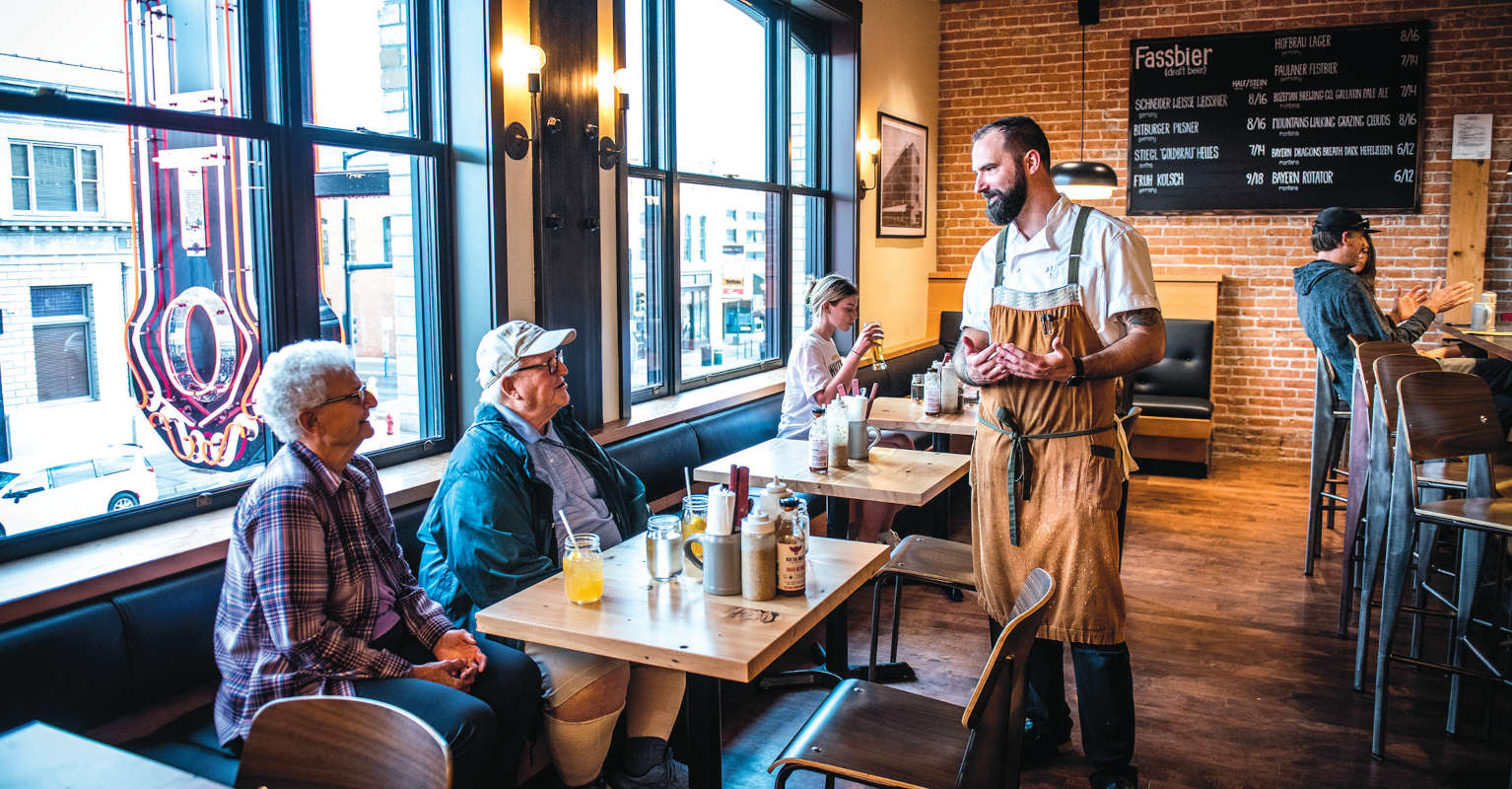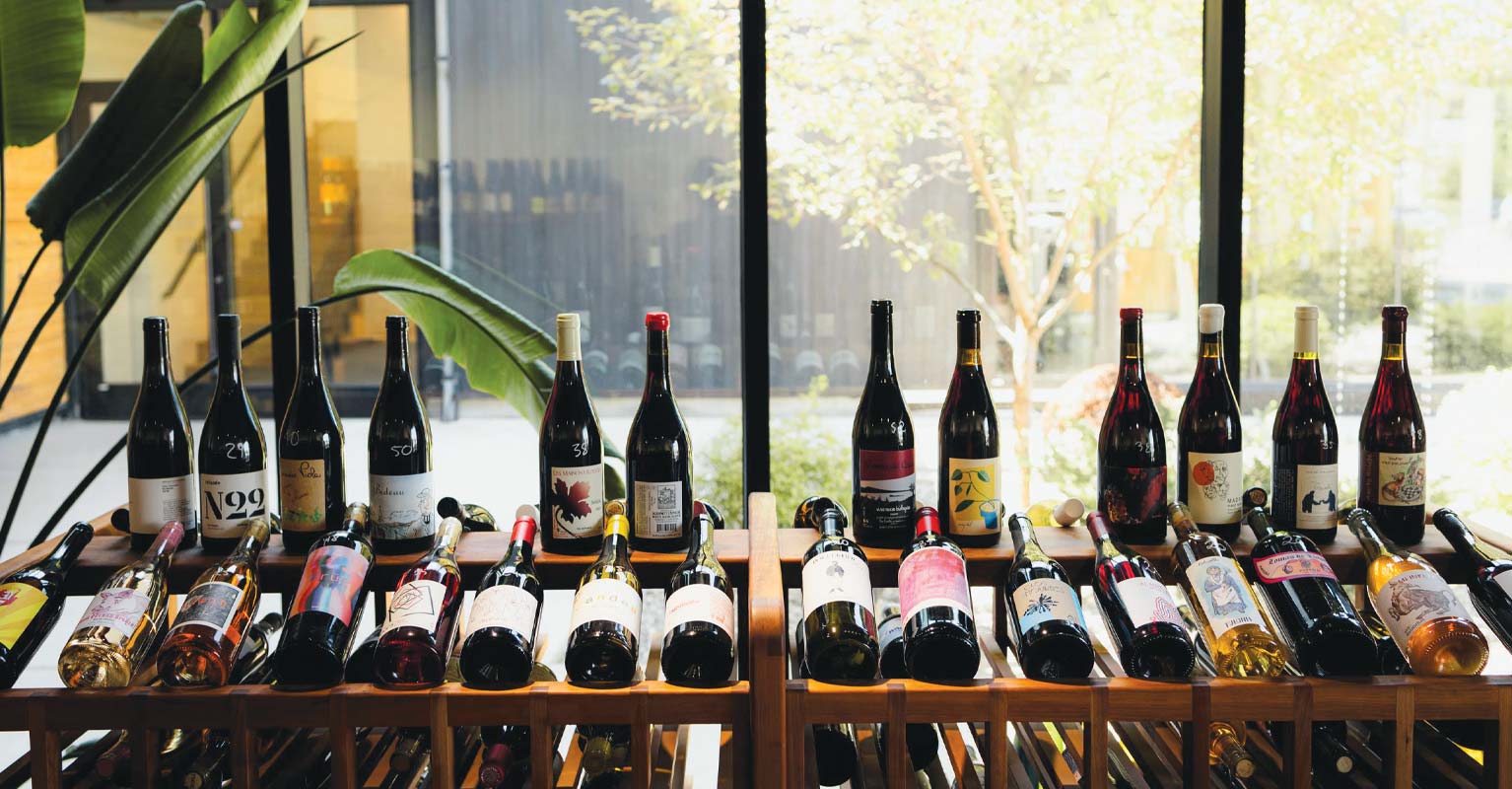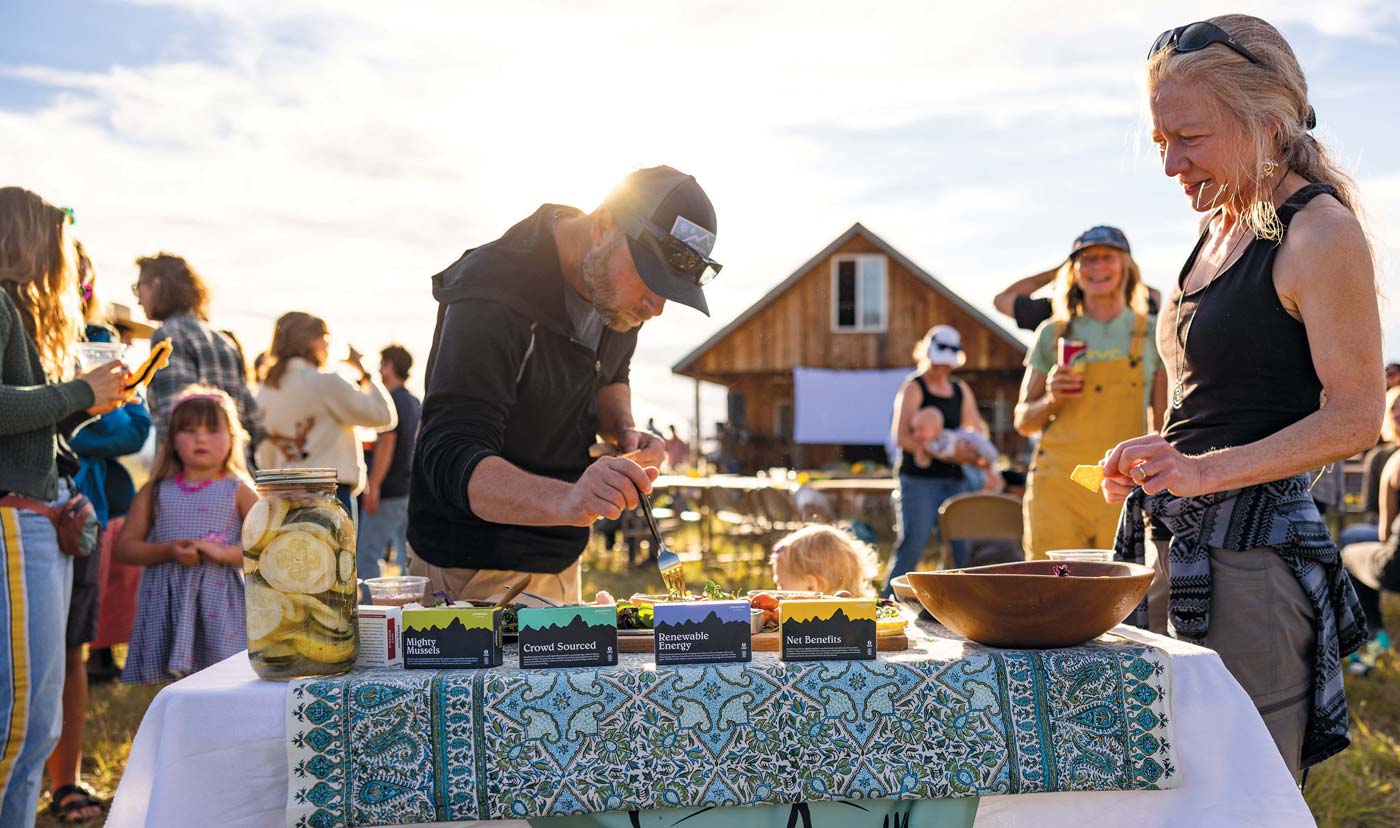The Livingston Food Resource Center
Loaves of bread, tenderly tucked into an oven, stretch and swell under sweltering heat. The crust caramelizes, firming to an optimal crunch. The loaves are baked in batches, some spongy and square for sandwiches, others boasting the crackled crust of baguettes, ciabatta, sourdough, and rye. They rest on rows of racks in the bakery, destined to better a small part of some person’s day.
This bread is baked at the Livingston Community Bakery, which opened in March as an arm of the Livingston Food Resource Center. The new bakery is one in a long list of programs at the food pantry, all targeted to address the root causes of poverty and hunger. Beyond providing food to those in need in Park County, LFRC takes it several steps further with programming that makes a meaningful impact in the community by bolstering the local economy, educating the general public, and bettering people’s health.
GETTING TO THE ROOT
When Michael McCormick started volunteering at the Livingston food pantry twelve years ago, it was located on the edge of town in an old automotive warehouse—a far cry from the bright brick building that houses the center today in the heart of downtown Livingston on South Second Street. Just three blocks from the historic Murray Hotel, and tucked close to the Livingston–Park County Library, the post office, and various community businesses, today’s food pantry raises awareness about food insecurity and puts a positive face on the challenges and opportunities that abound.
“I don’t really have any interest in passing out free food and going home,” says McCormick, who became the director of LFRC in 2008, after retiring to Livingston from a thirty-five-year career in publishing and finance. He says he got bored fishing and found himself volunteering. When he was asked to step into the director’s role, he saw it as an opportunity to develop the pantry and make a lasting impact.
“I wasn’t satisfied at all in terms of what I thought a food pantry was capable of doing. I wanted to turn the pantry into an economic force in the community.”
By routinely surveying the people LFRC serves, McCormick knows people in Livingston come to the food pantry because of poverty, which shows up as a lack of year-round employment that pays a living wage, a lack of marketable job skills, and chronic illness or poor health. “The issue is poverty, not hunger,” he says. “If you pass out food, they’ll be hungry again tomorrow. We need to address poverty.”
It’s a mission that’s become all the more urgent with the COVID-19 pandemic. At the onset of the outbreak, LFRC saw demand triple as more and more young families faced job cuts and looked for any kind of help. During April, that demand leveled off with the pantry serving a total of 2,172 individuals out of a Park County population of about 16,000, and an austere McCormick worries what might happen when short-term stimulus checks run out.
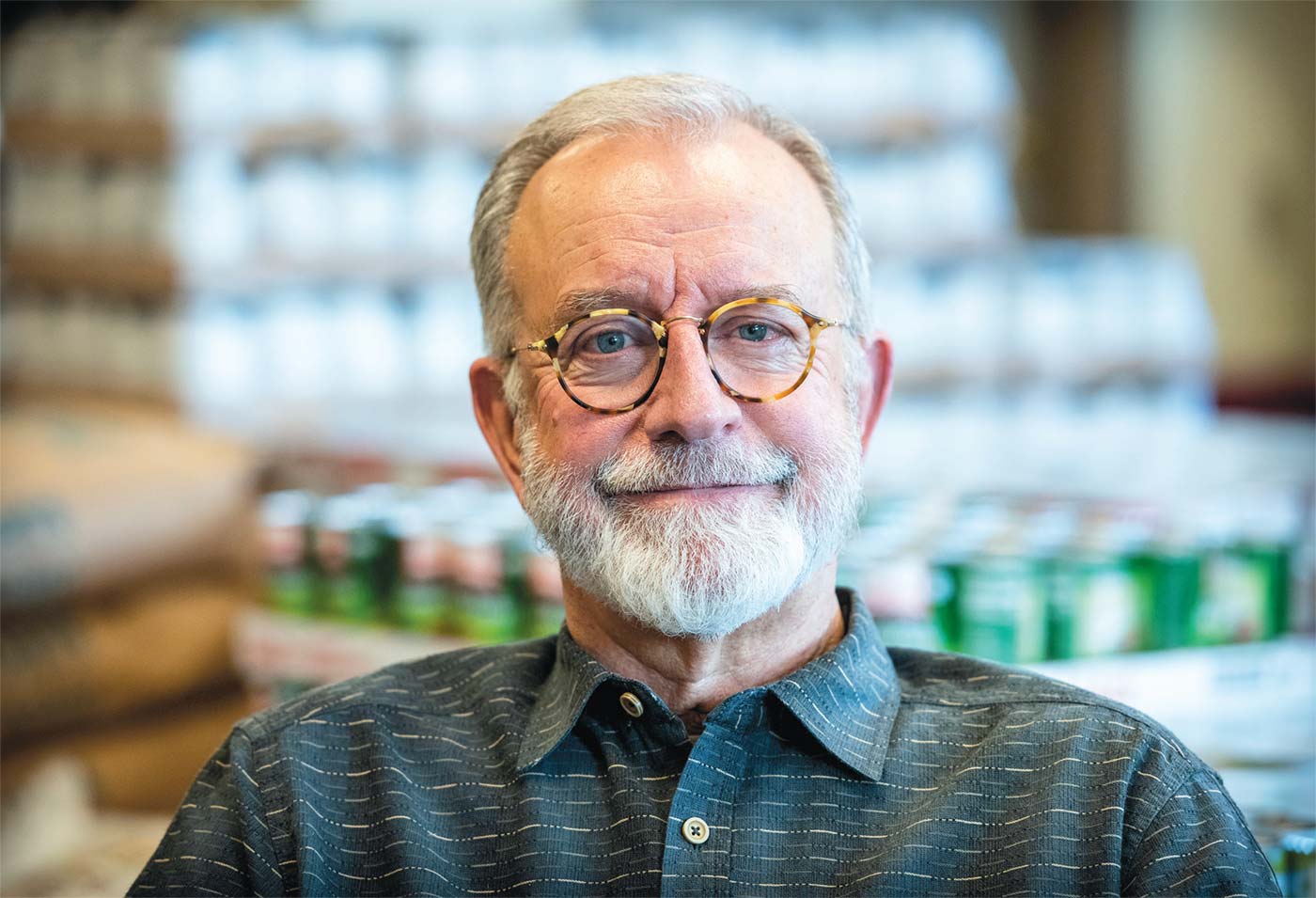
SUPPORTING LOCAL
When flour was depleted from the Livingston grocery store shelves in March and April after panic-buying stripped inventory and COVID-19 shutdowns interrupted the supply chain, McCormick was still able to procure his regular pallet of flour from his grain supplier, Montana Flour & Grains in Fort Benton.
That’s because most flour, like the majority of products in grocery stores, is processed in faraway states. “We’re seeing the vulnerability of a large, national–international food system. It’s breaking down,” he says. “We need to rebuild the local food economy in this state.”
In an effort to nourish people in need while supporting community agriculture and the state economy, the resource center prioritizes locally sourced, minimally processed food. On one wall in the center, a row of freezers houses pastas, soups, stews and pre-cut frozen vegetables, all cooked and prepared by the center staff.
McCormick acquires fresh meat, fruit, and vegetables from Montana and Pacific Northwest markets, and makes it a point to buy from farms he’s been able to visit. This keeps dollars in the local food system, supports Montana industry and jobs, and encourages community participation in the local food industry.
It’s a sharp contrast to the typical pantry model, which sees hardworking staff raise money to buy as much cheap box food as they can, give it all away, then do it again tomorrow. “I wanted the food pantry to do something greater and have a lasting impact on the community,” he says.
McCormick acquires fresh meat, fruit, and vegetables from Montana and Pacific Northwest markets, and makes it a point to buy from farms he’s been able to visit. This keeps dollars in the local food system, supports Montana industry and jobs, and encourages community participation in the local food industry.
TEACHING SKILLS
The pantry moved to its Second Street location five years ago, and a key element of the new building plays directly into the center’s effort to generate economic development as well as improve education. A large commercial kitchen enables the pantry staff to transform raw ingredients into wholesome meals, and the space also serves as a place of learning.
The pantry rents the kitchen space to entrepreneurs and new businesses and offers assistance in the form of financial planning, recipe development, license procurement, and guidance on distribution and packaging. So far, fifteen new businesses have started in LFRC’s Community Kitchen, creating jobs in the food industry, bolstering individual job skills, and growing the local food industry.
Suzanne Klaric of Dolina Pasta says renting kitchen space at the center made her business possible. She began selling pasta in 2016 at the area farmers markets and has been able to expand so that now she’s selling smallbatch pastas in a selection of Bozeman grocery stores as well.
As Klaric slides a bundle of linguine noodles into a package, she looks up from the kitchen’s stainless-steel countertops and adds that she’s glad her rent is going back to the food pantry, a place that is doing good for the community.
Additional educational programs at the center include a culinary apprenticeship that prepares people for jobs as bakers and cooks, and the kids cooking camp, which teaches children between the ages of six and ten kitchen safety and healthy cooking skills.
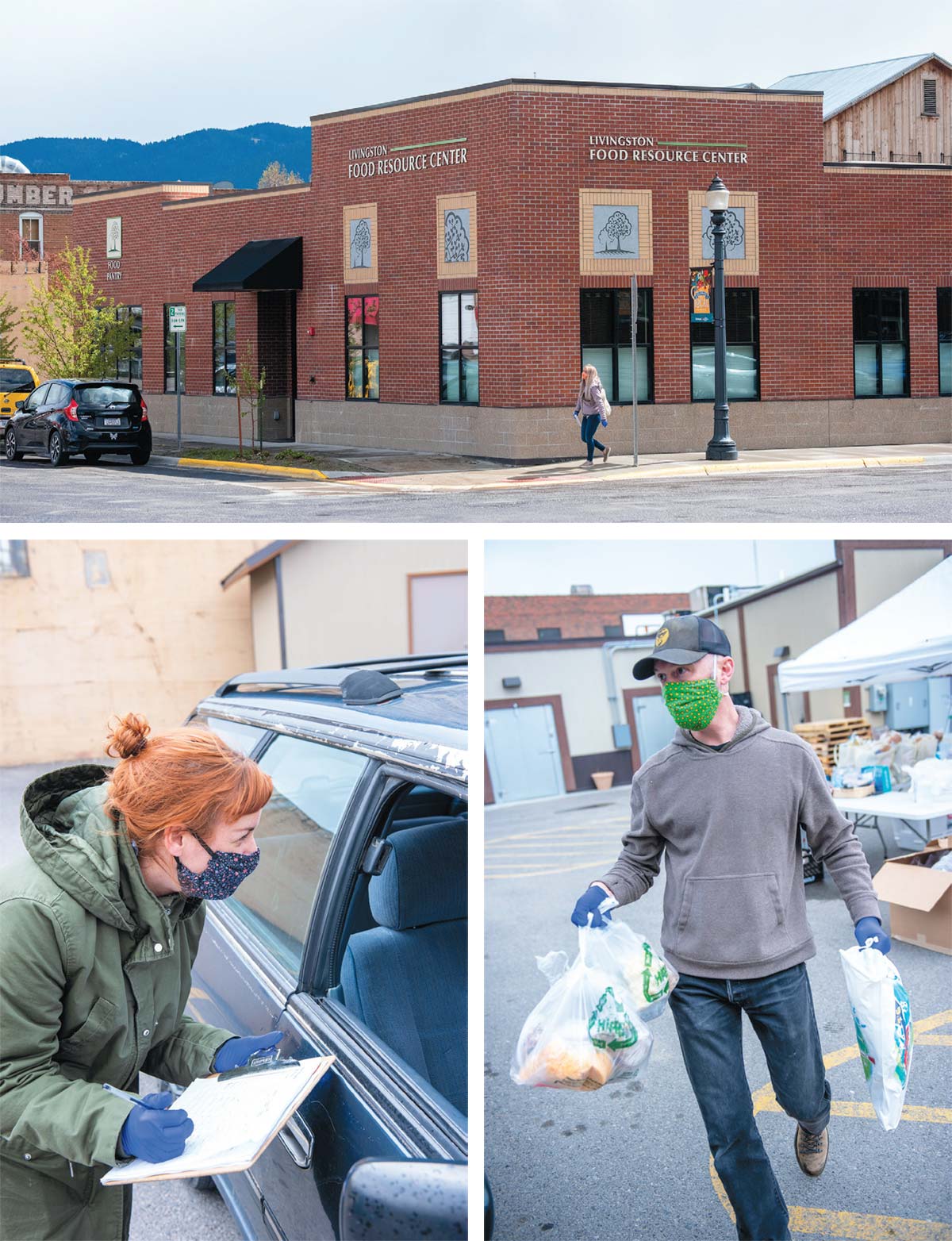
IMPROVING HEALTH
Of the people the resource center serves, many are plagued by diabetes, heart disease, and chronic illness. “If the people we’re serving are struggling, and a lot of the struggle is precipitated by chronic disease and a lack of job skills, then our mission becomes something more than just passing out free food,” McCormick says.
By distributing nutrient-dense food that is locally sourced and minimally processed, all prepared in the center’s Community Kitchen, LFRC is providing access to healthy food that might actually improve a person’s health.
To make it all possible, LFRC partners with MSU’s Montana Dietetic Internship program, in which postgraduate professionals complete 1,400 hours of supervised practice as a final step to becoming credentialed licensed dietitians. As a part of the students’ curriculum, they complete a two-week rotation at LFRC, where they gain exposure to community health work.
At LFRC, the students assist with programming and education, and the resource center benefits from the students’ nutrition expertise.
“The nice thing about Livingston is how well their community works together to create positive environments and healthy food access,” says Internship Director Coleen Kaiser. “What a remarkable positive difference the center makes in their community.”
Certainly, as an organization seeking to nourish people in need, LFRC is working hard to address the root causes of poverty, with intentional, impactful programming that reaches a large part of the Livingston community.
LINCOLN SCHOOL COMMUNITY GARDEN SHIFTS FOCUS
By Liz Allen
The staff of the LFRC decided to alter their community garden’s direction this year. Instead of providing individual plots to residents, they will grow food to distribute in the community. Kelsey Tanner, program manager for LFRC, called this an incredibly difficult decision. But as the pandemic began to affect Montanans this spring, the number of families needing food at LFRC initially surged to about 300 percent of normal.
They aim to keep the garden alive this year by engaging past individual plot holders as well as regular LFRC volunteers who are continuing to social distance, something the garden allows for. Tanner views this growing season as an experiment, but she also envisions more residents will find out about the garden, stirring up more involvement. LFRC plans for the community garden to return to individual plots in 2021.
Some volunteers are helping create better soil by sifting the existing dirt and putting a layer of cardboard under all the plots. Other volunteers plan to help weekly by planting, weeding, and watering.
The garden has thirty plots planted with black-seeded Simpson lettuce, rainbow chard, arugula, kale, spinach, peas, squash, cucumbers, bush beans, and tomatoes. Around the perimeter, strawberries and raspberries are growing.
This fresh, local produce will be available throughout the growing season to provide vital sustenance and supplemental nutrients for families struggling economically, with priority given to the most vulnerable residents (about 25 percent of Park County’s population is over the age of sixty-five).


